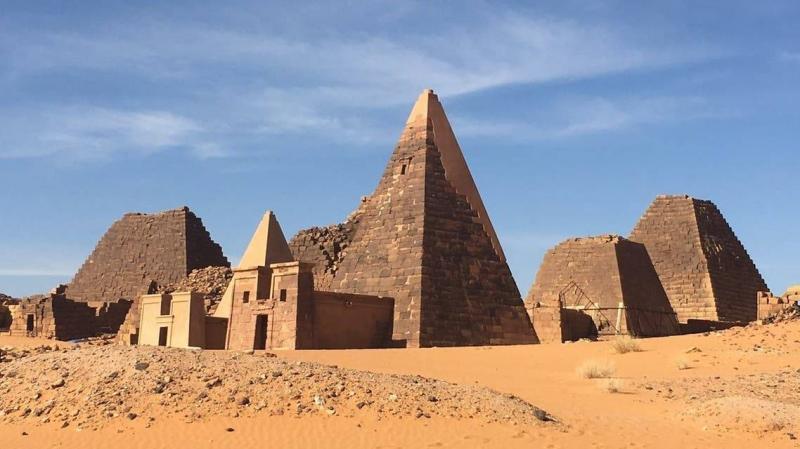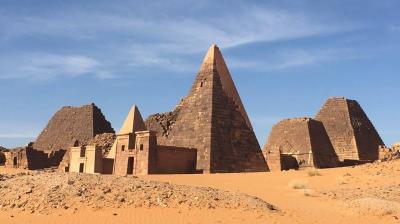When the word "pyramids" is mentioned, attention often turns to the Pyramids of Giza in Egypt, and rarely to Tikal Pyramids in Guatemala, the Pyramid of the Sun in Teotihuacán, or Kukulkan Pyramid, also known as Chichen Itza in Mexico. Many overlook or perhaps are unaware of the Nubian pyramids located in the Nile basin, which historically is known as Nubia, present-day northern Sudan.
During the period between 2500 and 1500 BC, the city of Kerma served as the capital of Nubia before it transitioned to the city of Napata between 1000 and 300 BC. Later, the city of Meroë became the Nubian capital until around 300 AD. Approximately 220 pyramids were constructed in this region over hundreds of years. These pyramids served as tombs for kings, queens, and the wealthy of the cities of Napata and Meroë.
Despite being smaller in size compared to their Egyptian counterparts, the Nubian pyramids surpass the ones at Giza in terms of quantity, with an estimated total of about 220 pyramids. Typically, these Sudanese pyramids, distinguished by their sharp peaks, do not exceed thirty meters in height and contain sacred chambers where gifts, food, and offerings for the deceased were placed.
Further research based on engravings inside the pyramids has revealed that the bodies within them were embalmed and placed in coffins before being adorned with jewelry and precious stones. Some archaeologists who visited the Nubian pyramids in the 19th and 20th centuries confirmed the presence of bows, arrows, horse harnesses, wooden boxes, pottery, colored glass, and metal vessels, along with various other handmade items. These goods found within the pyramids and burial chambers demonstrate that there was significant trade activity between Nubia, Egypt, and the Greeks.
The Nubian pyramids, estimated to be around 220 in number, are distributed across three main areas: El-Kurru, Meroë, and Nuri. El-Kurru contains the tomb of King Kashta, the successor of King Alara of Nubia, considered one of the most important Kushite kings of Nubia. This site also includes the tombs of 14 other queens and some descendants of Kashta. In contrast, the pyramids of the Nuri area house the graves of more than 70 kings, queens, and princes.
On the other hand, the Jebel Barkal area is less popular among these three sites due to the limited number of pyramids present there, having only 9 pyramids compared to the sites of El-Kurru, Nuri, and Meroë.
It is noted that over the centuries, these Nubian pyramids suffered from looting and vandalism. In the 1830s, the Italian adventurer and treasure hunter Giuseppe Ferlini arrived at the pyramids of Meroë, which had become the center of the Kingdom of Kush around the 4th century BC, in search of wealth following information provided by a number of European researchers about the site. During his adventure, in which he collected a large quantity of treasures and gold and silver, this Italian adventurer caused the destruction and vandalism of at least 40 Nubian pyramids.
After strenuous attempts to sell them in Italy and France, Ferlini managed to sell a significant portion of the Nubian treasures he collected to Ludwig I of Bavaria. Currently, these Nubian treasures are housed in the National Museum of Egyptian Art in Germany. Between 1916 and 1919, American archaeologist George Andrew Reisner conducted research at the Nuri pyramids and found numerous burial chambers containing the burial places of at least 80 individuals from the royal family of the Kingdom of Kush.




